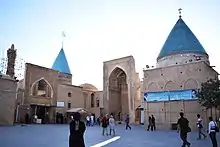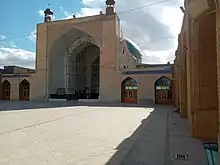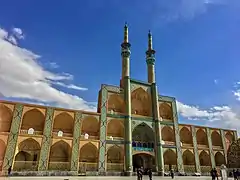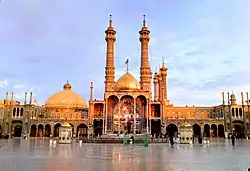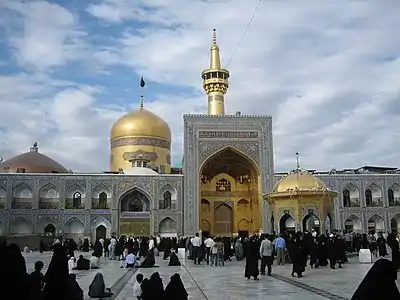Sepahsalar Mosque
The Sepahsālār Mosque (Persian: مسجد سپهسالار - Masjed-e Sepahsālār) is a famous historic mosque in Tehran, Iran. The construction project of the mosque was started in 1879 upon the order of Mirza Hosein Sepahsalar, the Grand Vizir of Iran during Naser al-Din Shah Qajar, and the first phase of construction was finished after five years since it was started. The mosque was renamed the Shahid Motahhari (مسجد شهید مطهری), after the 1979 Iranian Revolution, but it is commonly known as its initial name of Sepahsalar Mosque.
| Sepahsālār Mosque | |
|---|---|
مسجد سپهسالار | |
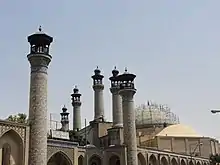 | |
| Religion | |
| Affiliation | Islam |
| Province | Tehran Province |
| Year consecrated | 1879 to 1884 |
| Status | Active |
| Location | |
| Location | Baharestan, Tehran, Iran |
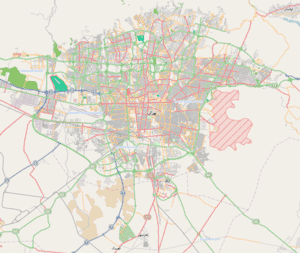 Location in Tehran | |
| Geographic coordinates | 35°41′19.5″N 51°25′58.37″E |
| Architecture | |
| Style | Qajar |
| Minaret(s) | 8 |
The Sepahsalar Mosque is one of the largest Mosque in Tehran.[1] During the late Qajar as well as Pahlavi era, Sepahsalar mosque was distinctive landmark of Tehran with its eight minarets which was unique in Persian design of mosques.[1]
The mosque is located southeast of Baharestan square, next to the former National Consultative Majlis of Iran.
Architecture
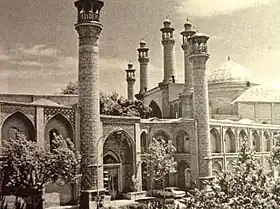
The Sepahsalar Mosque is the first mosque in Tehran whose design is mix of Persian architecture and architecture of mosques in Istanbul. The building is inspired by Jameh Mosque of Isfahan, Chaharbagh School and Sultan Ahmed Mosque. The mosque has a special dome and eight minarets.[2]
The main entrance portal and the facade are of a quite distinctive Qajar style. Two massive minarets flank the recessed entrance, which leads into a courtyard surrounded by twin-storeyed arcades of college rooms; in all there are some 60 chambers.[3]
Tiles with full-blown floral motifs in typically flamboyant Qajar style decorate the courtyard, while a tile inscription band gives details of the original endowment. The prayer hall dome, 37m in height, is supported by 44 columns.[3]
Events
Former Prime Minister and Minister of the Royal Court Abdolhossein Hazhir was assassinated by a member of the Fada'iyan-e Islam at the mosque in November 1949.[4]
Gallery
 Under construction, 1879–1884
Under construction, 1879–1884 Sepahsalar Mosque during the Qajar dynasty period
Sepahsalar Mosque during the Qajar dynasty period Sepahsalar Mosque, 1930s
Sepahsalar Mosque, 1930s Ali-Akbar Davar funeral
Ali-Akbar Davar funeral Inside view
Inside view Sanctuary
Sanctuary
 Minaret
Minaret Oldest Room in Sepahsalar High School
Oldest Room in Sepahsalar High School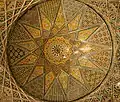 Interior dome
Interior dome Walls
Walls
See also
References
- "Photos: Sepahsalar Mosque and school in Tehran". payvand.com. Retrieved 2016-12-28.
- "Sepahsalar Mosque | Persian Tourism Guide - Iran's Tourism". persiantourismguide.com. Retrieved 28 December 2016.
- "Motahari Mosque (Masjed-e Sepahsalar) - SURFIRAN". surfiran.com. Retrieved 28 December 2016.
- Farhad Kazemi (1984). "The Fadaˈiyan-e Islam: Fanaticism, Politics and Terror". In Said Amir Arjomand (ed.). From Nationalism to Revolutionary Islam. London: Palgrave Macmillan. p. 163. ISBN 978-1-349-06849-4.
External links
![]() Media related to Sepahsalar Mosque-Madrassa at Wikimedia Commons
Media related to Sepahsalar Mosque-Madrassa at Wikimedia Commons
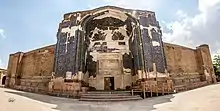
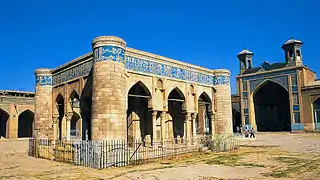

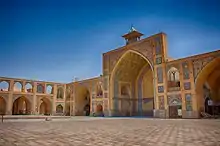

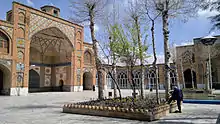
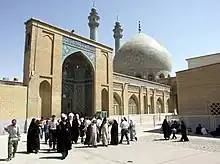
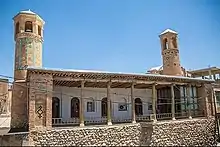
%252C_2014.JPG.webp)
